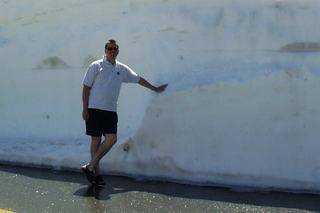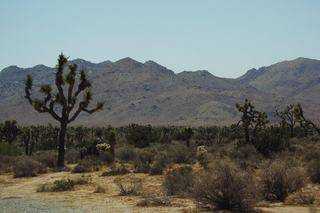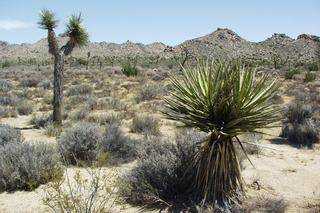Camera Life 5

It’s hard to believe that a hobby program from a student at York University would be the catalyst to get me back into photography, but that’s exactly what happened in the late nineties. I cannot deny that, photographically, I’d lost my way at that time. In career terms, things were going well, I had left the offshore life in 1994 after a year posted to China and started working in the newspaper industry as an advertising systems engineer. On the personal front, however, it was pretty awful. And that is all that I’m going to say on that subject. It’s water under the bridge.
For as long as I had owned computers (about fifteen years or so at this time) I had been interested in using those machines to create photo-realistic rendered images. I was a fan of the work of Ken Musgrave, a pioneer in the field. The Acorn Archimedes that I bought in 1987 was probably my first computer that could produce realistic images in a practical timeframe. One of my favorite programs on this machine was a BBC basic program called “Magrathea” that, you’ve guessed it, created computer-generated landscapes. It was fun hacking the program to improve the realism of the output, but it couldn’t be called photo realistic in any way.
Fast-forward about a decade and the world is a different place. Windows 95 is already the dominant operating system and boring beige boxes ruled the roost. I was still into 3D rendering, but, at my level, there was still no realistic landscape generating application at the hobbyist end of the market. It’s at this point that I heard about a beta app created by a student programmer at York University called Matt Fairclough, his app was called Terragen.
What’s this got to do with photography? Bear with me and you’ll find out.
Terragen was everything that I had been looking for. It allowed me to create photo-realistic landscapes (within certain boundaries) on my Windows PC, and it did it well. Not only that but, it also had a very vibrant user community for sharing and discussing creations. I made friends on the Terragen group that remain friends to this day. However, all was not well. When creating my imaginary landscapes, I would often spend hours tweaking viewpoints and compositions to achieve the best possible image. I noticed, at this time, that not everyone took the same care. For many people, the composition took second place to the photo-realistic aspects of their images. Many images looked great but didn’t work as anything but technical demonstrations.
I realized that my problem was that I was trying to create works that were realistic but also compositionally attractive too. I was trying to render landscape photos. Everywhere I went, I started looking at the landscape with a new eye, an eye to how I would render it. This soon led to me thinking about how I might photograph the landscape. It was time to get back into photography.
In 1998, I bought one of the first digital cameras on the market. A Fujifilm DX-7. This was an expensive plastic thing that shot at 640x480 VGA resolution. I have no surviving photos from this camera and my only memory of it is when it seized up from the cold on the summit of Mount Washington in New Hampshire. However, I had the digital bug and soon replaced it with an Olympus C2500L a much better machine with a massive 2.5-megapixel sensor and a zoom lens.
In 2000, my company wanted to send me to Hong Kong. However, before I could go to Hong Kong, I would have to visit the head office in Boston for some training first. I wasn’t so keen on the idea of flying from London to Boston on a Tuesday, returning to London on Friday and then leaving for Hong Kong on Sunday. So, I suggested that on Friday, I fly to Seattle instead and then onwards to Hong Kong on the following Monday. The company agreed. This would give me a weekend in Washington and a chance to meet up with Terragen friends Tim and Angela O’Donoghue. The first Terragen Intercontinental Conference was born. It was great to discover that Tim also had a C2500L (He reminded me to mention that yesterday).
The visit was a success, we went to Mount St. Helens, its landscape still showing signs of devastation twenty years after the eruption. On the second day, Tim and I headed north into the Cascades to photograph the awesome Mount Shuksan and to experience the surreal novelty (for me) of fifteen-foot deep snow-drifts, on a hot sunny July day.
The second Terragen Intercontinental Conference took place a year later in Los Angeles and coincided with SIGGRAPH2001. This one was truly intercontinental with attendees from the UK, the USA, and New Zealand. Matt (living in LA by this time) was there as was Terragen’s Macintosh coder, Jo, from New Zealand, and Ken Musgrave who was promoting his new product, “Mojoworld” that year. Tim and I still managed to grab a day off From the hectic foot pounding schedule of the exhibition halls and head out to Joshua Tree National Park with our C2500Ls.





